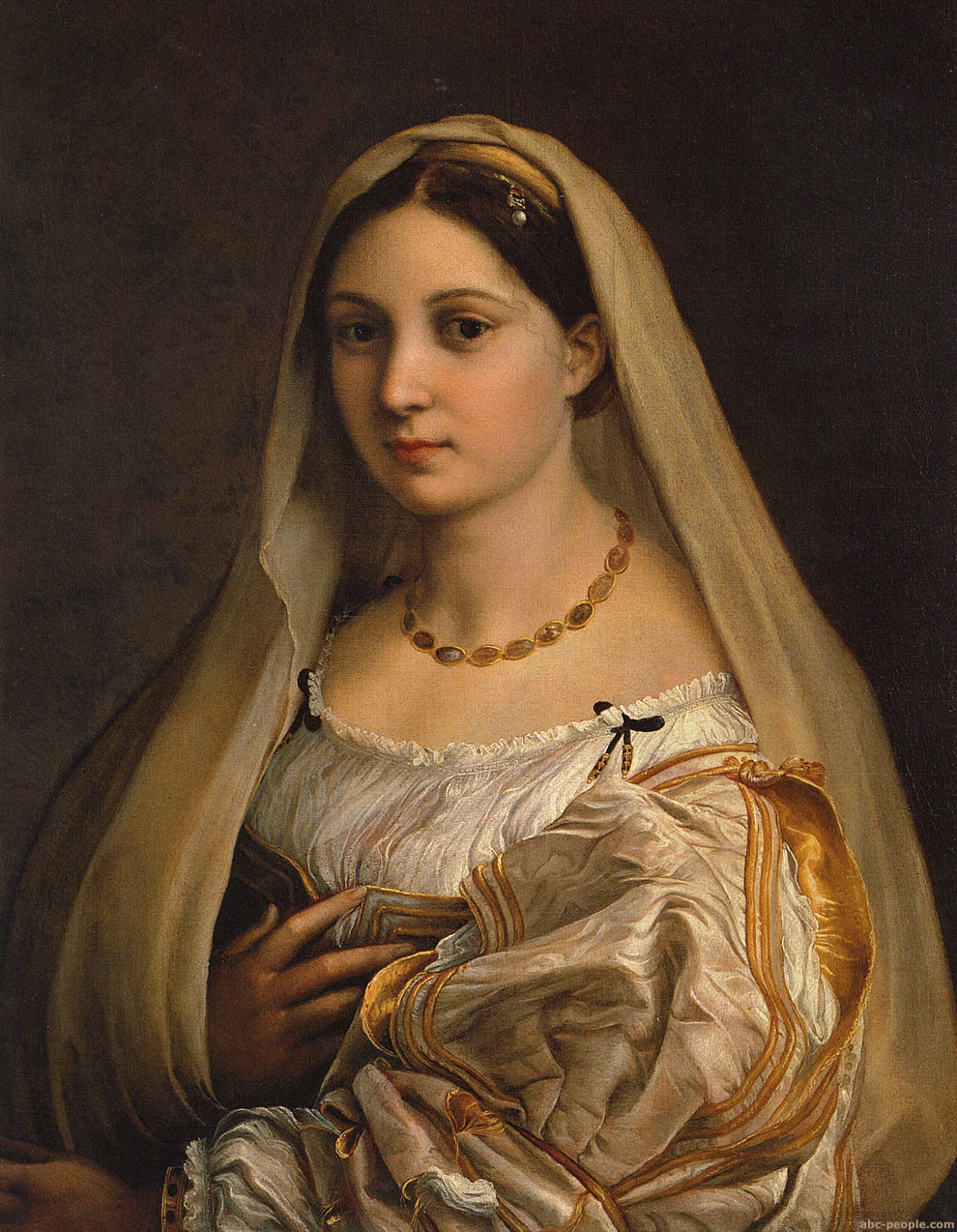| Raphael's
Masterpieces |
|
La
Donna Velata |
|
|
La
Velata by Kathleen Durham |
|||
Raphael was known in the 1500s as he is today for the beauty of the madonnas he painted. He often spoke of an ideal conception of beauty that he used in his earlier madonnas. While in Florence he perfected ‘sfumato’, that soft smoky transition between colors that was developed by Leonardo. In another nod to Leonardo, Raphael began to do his portraits in half-length, which shows the sitter’s hands, instead of the old bust-length style. Once in Rome his portraits (and madonnas) reached a new level. They were no longer paintings of what people looked like. They were paintings that showed the inner essence of the sitter. Notable among these was the portrait of his friend Baldassare Castiglione, the painting that so impressed Rembrandt. The quiet direct gaze of the courtier, the soft colors and transitions, and the amazing fabrics – all worked together to set a new standard for portraiture. The same year Raphael painted La Velata. Almost five hundred years later we can feel her warm gaze, and marvel at the perfectly modelled face and neck, the colors of her skin. We see her exactly as Raphael did. What amazing care he gave to her clothing (!) Julia Addison, a Victorian writer, felt that La Velata is holding her loose bodice with one hand, as if it were being removed. |
|
||
The texture of the flimsy gathered chemisette contrasts with the crisp damask of the slashed sleeve with its gold lining and trim, and with the long sheer veil. So much tender detail! So
who is she? Most people believe she is Raphael’s long-time
lover, his true love, Margherita Luti, also known as the ‘Fornarina’,(
the baker’s daughter.). Raphael was engaged for years to Maria
Bibbiena, a niece of a Cardinal, but this portrait is not of Maria.
There is no doubt that Raphael was fond of women. Giorgio Vasari,
his first biographer, felt that Raphael’s early death came
from an excess of romantic activity! Many critics believe that it is obvious from the depth of feeling in the portrait of La Velata that she was indeed Raphael’s true love. A German scholar, Oskar Fischel, called it a “commission of his (Raphael’s) own, in the midst of the great frescoes and orders for altarpieces.......a love-prompted improvisation”. Some say that since La Velata wears a veil as married Roman women did, that she could even be the new wife of his patron Agostino Chigi. Others say that he painted his love with a veil because they were married! Whoever she was, Raphael used her face for the Sistine Madonna and for the Madonna of the Chair. In another portrait, La Fornarina, Raphael painted a woman who resembles La Velata. But here she wears nothing but a flimsy veil covering the lower half of her body. On her arm is a band with his name on it, and in her hair is a jeweled pearl ornament which appears to be the same jewel that La Velata wears. Recent cleaning has revealed a ring on her finger, setting off another round of speculation about the possibility that Raphael was secretly married to Margherita. It appears that no one will ever know the truth about La Velata’s identity. But does it matter? A Victorian poet, William Allen Butler, wrote a long poem about La Incognita (The Unknown One), another title often used then for La Velata. Here are the first few lines: “Long
has the summer sunlight shone Fairer
for this! No shadows cast La
Velata remains a favorite at the art-filled Pitti Palace. It is
such a privilege for us to be able to see her here, all by herself. For
a large part of the Twentieth Century Raphael was marginalized,
probably as a result of way too many bad reproductions of his work,
along with renewed interest in Michelangelo and Leonardo. But in
recent years there has been renewed scholarly respect and popular
interest in his work. A drawing of Raphael’s just sold at
auction for the highest price ever paid for a work on paper. |
|
|||||||
|
|||||||


